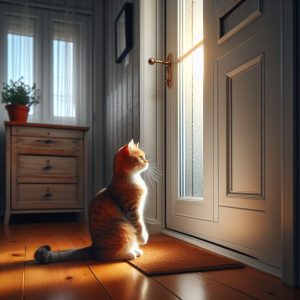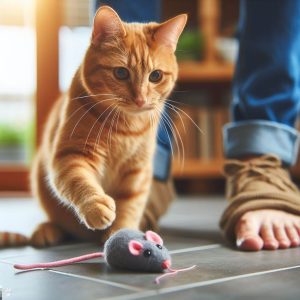Cat litter is an essential commodity for any cat owner. With so many options on the market, it can be hard to know which litter to choose. Wood pellet cat litter has grown in popularity as an affordable, eco-friendly alternative to traditional clay and clumping litters. But is it safe for your furry companion?
In this comprehensive guide, we’ll cover everything you need to know about wood pellet cat litter. We’ll discuss the pros and cons, dive into safety considerations, and provide helpful tips and strategies for transitioning your cat to wood pellets safely. Read on to learn if this sustainable litter is right for your cat!
What Are Wood Pellet Cat Litters?
Wood pellet cat litters are made from compressed sawdust or wood fibers. The dense, compact pellets are highly absorbent and naturally lightweight. When wet, the pellets break down into absorptive sawdust.
Wood pellet litters are completely natural with no added chemicals, fragrances, or additives. The pellets used are often made from hardwood trees like pine or fir. Always choose food-grade pellets to ensure quality and safety.
Many wood pellet litters are also produced from sustainably-harvested timber or manufacturing waste products. This makes them an eco-friendly choice compared to traditional clay litters.
The Pros of Wood Pellet Litter
There are many benefits that make wood pellets an attractive cat litter option:
Cost-Effective: Wood pellets are very affordable, especially when bought in bulk. The pellets can last up to 4 times longer than traditional clay litter before needing change. This saves you money in the long run.
Natural and Chemical-Free: Wood pellets contain no perfumes, dyes, or chemicals. This makes them a good choice for cats with sensitivities. The natural pine scent also helps control odors.
Environmentally Sustainable: Wood pellet litter is biodegradable, renewable, and uses manufacturing byproducts. This makes it an eco-friendly alternative to clay.
Highly Absorbent: The dense pellets soak up liquid waste efficiently. The sawdust they break down into is also very absorbent. This helps control odors and moisture.
Low Tracking: Wood pellets are heavier than clay so they don’t track outside the box as much. The larger pellet size also means less dust and mess.
Easy Disposal: Used pellets and sawdust can simply be thrown in the trash. There’s no need to flush them or worry about clogged pipes.
Potential Drawbacks to Consider
However, wood pellet litter does come with some disadvantages to consider as well:
Dust: As pellets break down, they can generate fine sawdust that some cats may find irritating or too dusty. Respiratory issues may occur.
Not Clumping: Wood pellets absorb liquid but do not clump. This means urine and feces cannot be scooped out easily. Frequent litter changes are a must.
Spot Cleaning Required: The pellets must be spot cleaned multiple times per day to remove waste and prevent odor. Cats may reject dirty, saturated pellets.
Transition Time: It can take cats several weeks to adjust to pellets. Proper training is required to get cats used to the new substrate.
May Cause Blockages: If cats ingest the pellets, gastrointestinal blockages could potentially occur. Supervision is advised.
Not Flushable: Wood sawdust can clog drains so do not flush pellet litter. It must be disposed of in the trash instead.
While wood pellets make a great eco-friendly litter, they do require more maintenance and supervision compared to clumping clay options. But with the right precautions, wood pellets can be safe and effective for your cat.
Are Wood Pellets Safe for Cats? Key Considerations
Wood pellet litters can be completely safe for cats when used properly. Here are some key tips for ensuring your cat’s health and safety with wood pellets:
Choose Food-Grade Pellets
Make sure to only use wood pellets made for cat litter or animal bedding. The pellets should be untreated and chemical-free. Never use fuel pellets as they contain toxins.
Look for Low-Dust Varieties
Dust can aggravate respiratory issues in some cats. Opt for low-dust wood pellets made specifically for feline litter.
Avoid Scented Litters
Skip the fragrance oils, which may irritate cats’ sensitive respiratory tracts. Unscented pellets are best.
Ensure Good Ventilation
Place the litter box in a well-ventilated area of your home. Open windows regularly to circulate fresh air. Proper airflow minimizes dust buildup.
Change Out Frequently
Scoop waste and change pellets completely at least once per week. Twice weekly is better for odor control. Removing saturated pellets prevents bacterial growth.
Spot Clean Diligently
Promptly scoop out all urine clumps and solid wastes throughout the day. This keeps pellets fresh and lowers odor.
Use a Sifting Litter Box
A box with a mesh bottom makes waste removal easier. The pellets stay behind while urine/feces fall through holes.
Monitor Your Cat Closely
Pay attention to any signs of respiratory distress like sneezing or wheezing. Discontinue use if cats show discomfort. Also monitor their stools.
By selecting the right wood pellet product, maintaining the litter properly, and closely supervising your cat, this eco-friendly litter can safely replace traditional options.
6 Tips for Transitioning Your Cat to Wood Pellets
Switching litter types can be disruptive for cats who thrive on consistency. To help your feline accept wood pellet litter, follow these tips:
1. Gradually introduce the pellets
For the first week, fill the box with 25% pellets mixed with 75% of your old litter. Slowly increase the pellet ratio each week until only pellets remain after 4-6 weeks.
2. Place pellets in a familiar box
Keep using your cat’s favorite, established litter box. The familiarity helps ease the transition to the new substrate.
3. Try a cat attractant
Spraying pellets with an attractant like catnip can make the litter more enticing and reassuring.
4. Reward litter box use
Give treats and praise when your cat uses its box during the transition. This reinforces the desired behavior.
5. Avoid sudden changes
Take things slowly and gradually. Drastic changes to litter type or box location may cause house soiling.
6. Be patient
Some cats adapt faster than others. Allow 4-8 weeks for full acclimation. Temporary regression is normal. Stay consistent.
With time, rewards, and a steady transition, your cat can come to accept and use wood pellet litter with no trouble. Pay close attention and allow for an adjustment period.
Frequently Asked Questions About Wood Pellets
Here are answers to some common questions about the safety and use of wood pellet cat litter:
Are wood pellets safe if my cat eats them?
Wood pellets are generally non-toxic if ingested. However, they could potentially cause gastrointestinal blockages if a large amount is consumed. Supervise your cat and limit pellet intake.
How often should I change out wood pellet litter?
Fully replace soiled pellets at least 1-2 times per week. Change more frequently for multiple cats or odor issues. Spot clean solid wastes 2-3 times daily.
Can I flush wood pellet litter down the toilet?
No, you should never flush cat litter made from wood. The pellets and sawdust can clog drains and septic systems. Always dispose of used pellets in the trash.
Are wood pellets safe for kittens?
Wood pellets are safe for kittens over 6-8 weeks old. Ensure the litter is changed frequently to prevent odor and bacterial growth. Monitor kittens closely since pellets do not clump.
Are wood stove pellets the same as wood cat litter?
No. Fuel pellets for stoves and heating contain toxic chemicals and oils. Only use wood pellets specifically made for animal litter or bedding.
Can I compost used wood pellet cat litter?
Composting cat waste is not recommended. The feces can transmit diseases and parasites to humans. Dispose of soiled wood pellets in your normal household trash.
How do I clean a wood pellet litter box?
Sift out all waste daily. Fully change litter weekly or more often if needed. Clean the empty box with hot water and soap. Rinse and dry completely before refilling with fresh pellets.
5 Top Tips for Using Wood Pellet Litter
Follow these handy tips to make wood pellet litter easier to manage and keep your cat happy:
Tip 1: Use a sifting litter box to easily separate out solid wastes from unused pellets. Dump the waste and return good pellets to the box.
Tip 2: Spot clean urine clumps and poop scoops as soon as possible. This prevents pellets from breaking down and controls odors.
Tip 3: Add baking soda to the litter box to help absorb odors between full litter changes. Sprinkle on top or mix in.
Tip 4: Place the litter box in a low-traffic area of your home to minimize dust and noise that could scare cats away.
Tip 5: Purchase an air purifier to filter out excess sawdust and dust in rooms where litter boxes are kept.
The Bottom Line: Is Wood Pellet Litter Right for Your Cat?
Wood pellet cat litter provides an affordable, eco-friendly option if you don’t mind the extra maintenance required. The pellets are very absorbent and control odors well when changed frequently. While safe when used properly, wood pellets do generate dust and require diligent spot cleaning.
Kittens or cats with respiratory issues may do better with alternative litters. Any signs of discomfort, stress, or house soiling when transitioning to wood pellets warrant discontinuation.
Overall, wood pellets make a great natural litter for healthy cats when owners commit to daily sifting, frequent litter changes, and monitoring their cat’s health. The environmental and cost benefits may outweigh the extra work. Give wood pellets a try and see if your cat takes to this sustainable substrate.



